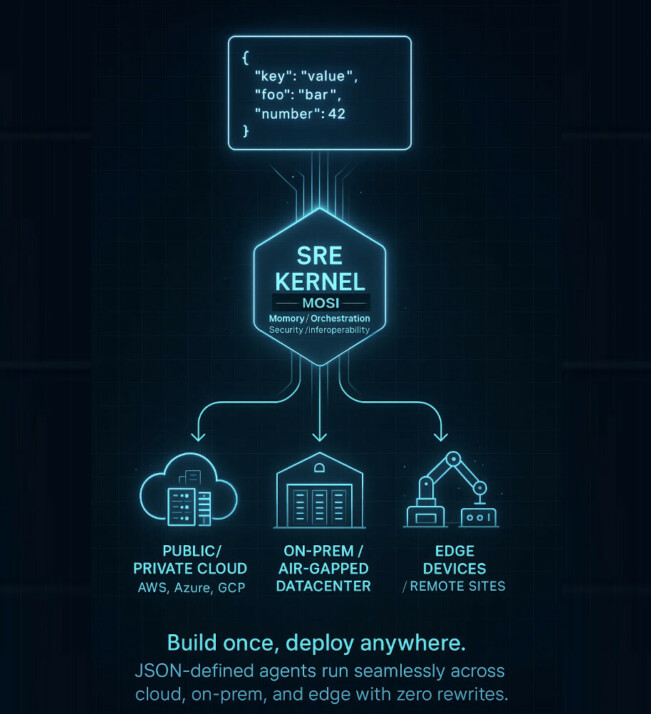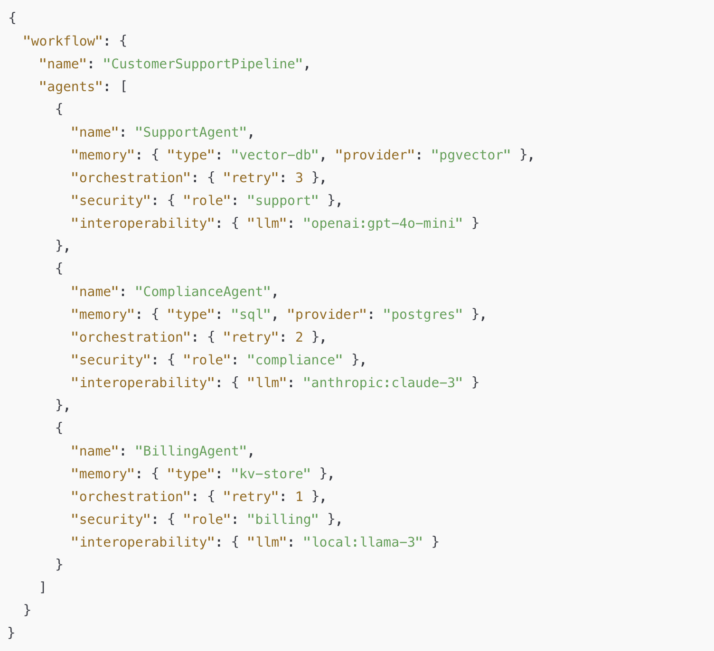MIT’s recent “The GenAI Divide: State of AI In Business 2025” report revealed a sobering truth: nearly 95% of enterprise agentic AI pilots never make it to production. The demos wow executives, but when it’s time to deploy, they collapse under the weight of enterprise reality.
The problem isn’t the intelligence of the models. It’s that enterprises lack the runtime foundation to make agents durable, governable, and portable. Without that backbone, projects stall in proof-of-concept limbo.
Across industries, the same four failure modes appear again and again:
- Fragility → brittle glue code that breaks beyond the lab.
- Lack of governance → security, identity, and audit bolted on too late.
- No durability → agents fail under retries, scaling, or long-running tasks.
- Vendor lock-in → swapping models or databases forces expensive rewrites.
In short, it’s not the models holding enterprises back—it’s the missing runtime “plumbing” that makes these projects production-grade.
The Missing Kernel for Agents
We’ve seen this story before.
In the 1990s, Java’s JRE unlocked portability with write once, run anywhere. Soon after, the Linux kernel became the invisible backbone of modern infrastructure by abstracting hardware, managing processes, and enforcing security.
SmythOS SRE is the kernel for agents. It combines the portability of the JRE with the reliability of Linux—abstracting away infrastructure complexity so agents can run anywhere: cloud, on-prem, or edge.
The diagram below illustrates how SRE is structured. Each subsystem directly addresses the four reasons pilots fail:

SmythOS Runtime Environment
The kernel layer that governs agents across any deployment—cloud, on-prem, or edge.
Global Access Rights Manager
Every action is mediated and auditable, solving the governance gap.
Security Subsystem
- ACL → Fine-grained permissions prevent misuse.
- Vault → Protects sensitive keys, tokens, and credentials.
- Account Services → Role-based identity management.
- Team Manager → Scoped access for enterprise users.
Security isn’t bolted on—it’s built in.
I/O Subsystem
- Vector DB (Pinecone, Milvus, Postgres) → Flexible embeddings storage.
- SQL DB (MariaDB, MySQL, Postgres) → Handles structured enterprise data.
- FileSystem (S3, local, etc.) → For unstructured data and logs.
- Key-Value Stores → Fast lookups for real-time workloads.
Eliminates brittle glue code by standardizing access to data and storage across vendors.
Memory Manager
- Context Service → Maintains agent state across sessions.
- LLM Context Service → Embeddings and persistence for reasoning.
- Cache Service (Memory, Redis) → Fast, durable recall.
Agents don’t forget or fail under long-running tasks—durability is guaranteed.
Agent Manager
- Context Manager → Keeps tasks scoped and aligned.
- Signal Manager → Ensures agents communicate reliably.
- Schedule Manager → Time- and event-based execution.
- Process Manager → Supervises lifecycles and retries.
Replaces fragile scripts with orchestrated, resilient execution.
LLM Manager
- Remote LLMs (OpenAI, Gemini, etc.)
- Local LLMs / Custom LLMs
Breaks vendor lock-in by letting enterprises swap models without rewrites.
NodeJS Event Loop
The concurrency engine that keeps agents responsive and scalable.
Just as Linux abstracts hardware into a stable OS kernel, SRE abstracts AI infrastructure into a stable kernel for agents.
From Kernel to Practice: Enter MOSI
Of course, a kernel is only valuable if it provides clear rules for how the system operates. That’s exactly what **MOSI—Memory, Orchestration, Security, and Interoperability—**does inside SRE.
- Memory solves durability → agents persist context and don’t collapse under retries or scale.
- Orchestration solves fragility → workflows are managed like processes, not glued scripts.
- Security solves governance → permissions, audit, and zero-trust at the kernel level.
- Interoperability solves lock-in → models, DBs, and clouds are swappable.
The same four reasons pilots fail are the four principles MOSI enforces. That symmetry is what makes SRE production-grade.
A Peek Under the Hood
Here’s how it looks in practice. A single JSON definition encodes all four MOSI principles:

This isn’t just configuration—it’s freedom. The same agent can run on an air-gapped on-prem server, an edge device in a factory, or the public cloud with no rewrites. SRE abstracts runtime from infrastructure, delivering “write once, run anywhere” for agents.

From Single Agents to Multi-Agent Workflows
The real power of SRE emerges when multiple agents collaborate under MOSI. Imagine a support pipeline:
- A Support Agent engages the customer and gathers details.
- A Compliance Agent validates the request against policies.
- A Billing Agent issues invoices once cleared.
In a legacy pilot, this would mean brittle glue code, scattered governance, and lock-in to one vendor’s stack. With SRE, each agent runs with scoped memory, orchestration, and security, while the workflow as a whole remains portable.

The Road Ahead: The Internet of Agents
Once agents are durable, governable, and free to interoperate, they stop being demos and start becoming enterprise-ready digital actors. They can persist knowledge across workflows, collaborate across boundaries, transact safely with zero-trust guarantees, and evolve without fear of lock-in.
This is the blueprint for the Internet of Agents—much like TCP/IP transformed standalone computers into the global Internet.
Why This Matters
Frameworks like LangChain and LangGraph are excellent for prototypes, and workflow tools such as Zapier and n8n make automation accessible. But none of these are true runtimes. None provides the kernel-level guarantees enterprises demand.
SmythOS SRE does. By embedding orchestration to remove fragility, security to enforce governance, memory to guarantee durability, and interoperability to avoid lock-in, SRE delivers the missing backbone enterprises have been waiting for.
That’s how we move beyond the 95% graveyard and into production at scale. And when that shift takes hold, today’s demo-to-production struggles will feel as outdated as dial-up modems.
Now it’s your turn. Don’t let your agents stall in proof-of-concept limbo; give them the durability, governance, and portability they need with SmythOS SRE. Whether you’re an executive ready to de-risk pilots, a developer looking for production-grade architecture, or a pioneer eager to help shape the Internet of Agents, the path forward is clear.
Try out SmythOS SRE and don’t forget to star and watch the repo to stay updated with the latest developments and contribute to production-grade agent infrastructure. Start building with SmythOS today and join the community moving from fragile demos to lasting impact.
